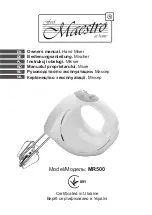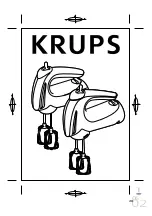
Revision C • 10/07
H
A
R
R
I
S
C
O
R
P
O
R
A T
I
O
N
1-3
1 G e n e r a l I n f o r m a t i o n
For example, if the “morningzoo” session is cur-
rently loaded on a RMX
digital-12 console, and it
has configured the console inputs as: five mics
(each with the talent’s name shown in the channel
display), three Telco channels (two phone hybrid
caller inputs and an ISDN live remote input) and
four line inputs (three digital delivery inputs for
sound FX, music beds, commercials, etc., and a
traffic or weather service feed).
To switch the console for the midday daypart
(one board operator/jock who takes requests and
plays back all sources from a digital delivery sys-
tem), means there is some extensive switching that
must take place on a non-programmable console.
On the RMX
digital, however, it is done simply
by dialing up and taking the “midday” session—
which immediately reconfigures the console, re-
sulting in Input 1 being the control room mic (with
the jock’s name shown in the channel display, if
desired); the next four inputs are routed from the
digital delivery system for music, liners and com-
mercials, while Input 6 remains the hybrid input
(for those call-in music requests). The remaining
Telco and input channels could be left alone or
they could be routed to silence, remaining avail-
able for the board operator to use as required.
To prevent on-air interruptions, any channels
that are On-Air when a session file is taken do not
immediately change settings. Instead, those chan-
nels only change to the new session file settings
when that channel is turned off in order to effect
seamless show transitions.
MAIN COMPONENT DESCRIPTIONS
An RMX
digital console has only three compo-
nents—as seen and used by the board operator:
Universal Dual Fader panels, a Monitor Control
panel and the Console Display.
Additional descriptions are presented in this
section for the power supply, KSU and DSP cards,
and for the optional 8-Input Expansion cards.
Universal Dual Fader Panels
Each Dual Fader panel has two sets of channel
strip controls with these functions: channel on/
off; fader level control; cue on/off; momentary talk-
back control to remotes or callers (active when
the channel strip is set as a Telco channel); input
source selector and take button; input mode but-
tons with pan/balance pot; send bus on/off, mode
and level control; and assignment buttons for four
program and one offline bus.
A ten-character display on each channel strip
normally shows the input source name. Alternate
source names are shown when the yellow Next
LED is lit during source selection.
A channel strip control can be assigned to con-
trol any type of audio source: mic; line; router;
Telco, as required by a particular daypart.
The audio source for each fader is initially set
by loading a session file. The input’s source name
(or an alias name) is shown in the ten-character
display above each fader. If no signal is routed to
the fader, then
SILENCE
is displayed.
The capacity to change the source—via a source
selector and
Take button, is a standard part of each
channel strip since the physical audio source for
each channel is “virtual”—it can be any physical
console input (analog or digital) and, when the
console is tied into a VistaMax system, any input
source on any VistaMax device networked with
the RMX
digital console. To simplify operation, the
available sources can be individually limited on a
channel strip through session file settings.
The input audio may also be linked with logic
from a peripheral or mic control panel to provide
fully independent parallel logic control functions
for remote control of the channel strip and/or
channel strip control of the source equipment.
Again, all of these parameters are set during con-
sole configuration so that the operator never has
to concern themselves about logic or signal rout-
ing when the session files are properly crafted.
Summary of Contents for RMXDIGITAL
Page 2: ...Revision C 10 07 H A R R I S C O R P O R A T I O N ii...
Page 90: ......










































